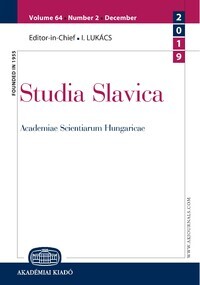Блюда национальной кухни как компоненты устойчивых сравнений украинцев (на фоне других языков)
Dishes of National Cuisine as Components of Ukrainian Similes (in Comparison to Other Languages)
Author(s): Irina Vladimirovna KuznetsovaSubject(s): Cultural history, Lexis, Semantics
Published by: Akadémiai Kiadó
Keywords: Ukrainian language; national cuisine; Oriental loanwords; phraseology; similes; food; structural-semantic model; motivational model
Summary/Abstract: Recently, the interest in the names of dishes of different peoples and their “conservation” in phraseology has significantly grown, as it is evidenced by a diversity of works on this topic. The paper considers some lexico-thematic groups of similes which contain the names of dishes of the national cuisine of Ukrainians (borsch, dough dishes, and pork rinds). Even this small review of the dishes of the national cuisine characterizes the food stereotypes of Ukrainians, reflected in such an extensive layer of phraseology as similes. Some of them still remain constant elements of the traditional national cuisine, while others have become archaisms occurring as lexico-semantically obsolete words in the composition of similes, preserving information about what previous generations ate. Time, various circumstances, and realia of modernity have made their own adjustments, and many dishes are prepared differently, not as before, with a changed form, composition of ingredients, etc.; their ritual symbolism is practically lost and forgotten. Metaphorically reinterpreted, the dishes of the national cuisine of an ethnic group characterize the features of the behaviour, character traits, appearance, manner of speech, etc. of a person. The paper deals with both outdated similes and those that are actively used nowadays. The analysis involves not only the material recorded by dictionaries but also the material that has not received registration in dictionaries. In addition to this, the author gives some cultural, historical, and etymological comments to similes as well as shows the meaning of phraseological units and components that are parts of similes. The analyzed material illustrates the rich phraseological potential of the names of dishes in Ukrainian similes, which is especially noticeable against the background of other languages. The phraseological material of other Slavic languages was used to identify the equivalence or non-equivalence of similes. The author also involves non-Slavic material. In some cases, the method of structural and semantic modelling was used. The comparative analysis of similes illustrates both the interlingual commonality of motivating ideas, and the nationally specific peculiarities revealed at the level of the image of comparison, the structural-semantic model, or both at the same time.
Journal: Studia Slavica Academiae Scientiarum Hungaricae
- Issue Year: 66/2021
- Issue No: 1
- Page Range: 81-100
- Page Count: 20
- Language: Russian
- Content File-PDF

